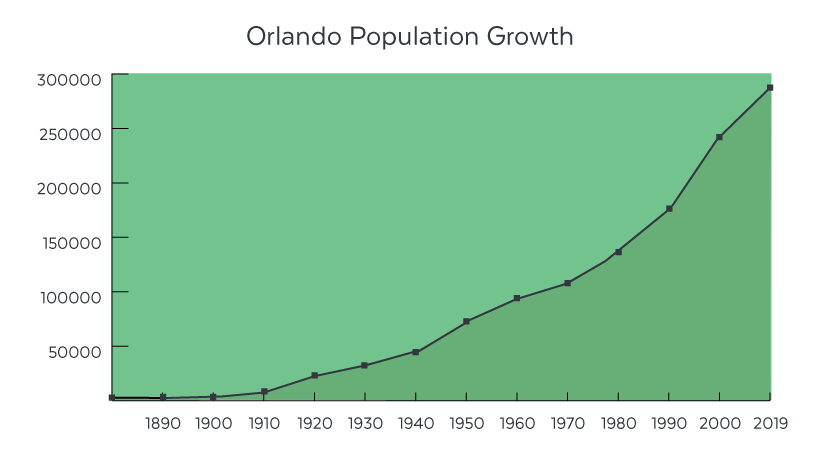While many know downtown Orlando as a center of business for the region, it’s important to recognize that downtown is also a center of history that dates back to the 1850s.
Our downtown was originally known as Jernigan, named for Aaron Jernigan who built a post office just north of Fort Gatlin, in 1850. When Jernigan was relieved of his command, the town was renamed to Orlando and incorporated in 1875. At that time, it was centered around today’s Magnolia Avenue and Court Avenue where, as you might guess, the courthouse was located (Keep reading for more about this.)
After cattle and citrus came other types of commerce and more construction. In 1885, Orlando became a city, and then things really began to change in the early 1890s when the railroad brought more settlers. The commercial center shifted away from the courthouse to the new rail depot located on Church Street, and by the 1920s, Orlando was home to 9,000 people. Many buildings constructed at that time, including the Angebilt Hotel, Wells’Built Hotel, Kress Building, and the Tinker Building are still in use today. You can learn more about downtown’s historic buildings and “skyscrapers” by taking a virtual walking tour.
After WWII, downtown Orlando continued to flourish into the early 1970s with the construction of office towers and the opening of I-4, which transformed it into a traditional central business district. Even more skyscrapers were built in the mid-1980s, including the distinctive SunTrust Center and Bank of America Center. It was also around this time that Lake Eola Park was redesigned to be a jewel in the center of it all. You can dive into some fun facts about Lake Eola’s history.

Today, downtown Orlando is where history and the future harmonize. It’s where businesses and residents thrive, and it’s where opportunity and hospitality remain constant. And remember that courthouse reference earlier? In 1892, a red brick courthouse was built in the city center. In 1927, a 4-story Beaux-Arts building replaced it as the main courthouse, which then became the Orange County Regional History Center in 2000. The original courthouse engraving is still visible at the top of the building’s Washington Street side. You can see it for yourself when you visit the displays and exhibits that tell the story of downtown Orlando.